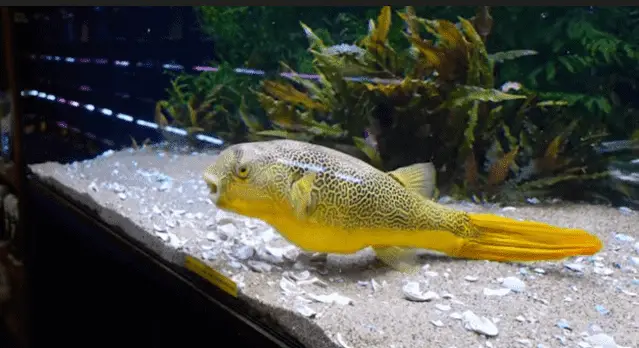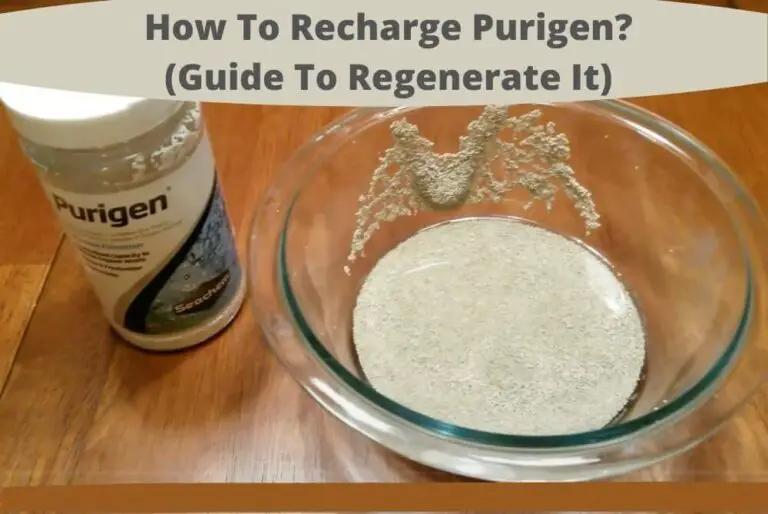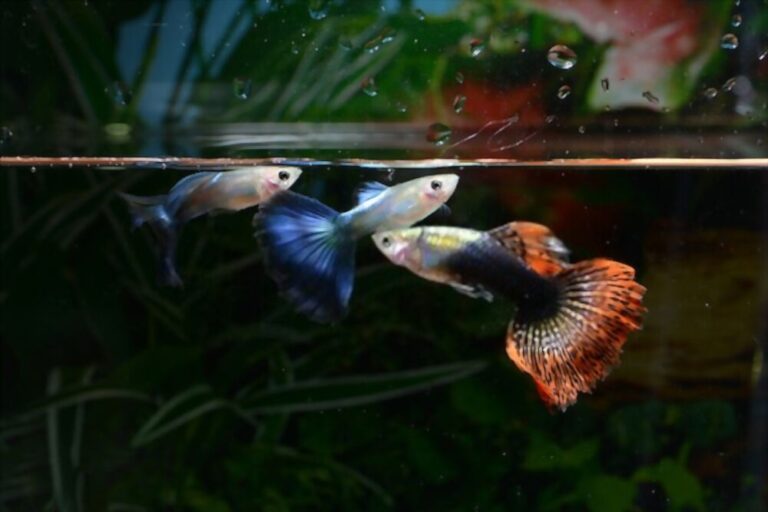How To Use Purigen? (Complete Guide To Set up & Use Purigen)
Purigen is nothing but a synthetic polymer designed for efficient control of ammonia, nitrites, nitrates, and many other toxic substances that build up in your tank.
We all know the tank inhabitants, including plants, release nitrogenous toxins into the water, which must be immediately removed to keep the tank running. It is highly efficient in absorbing such wastes at a much faster rate.
But many beginners are confused about how to use and set up the purigen in fish tanks. So, let us go to the complete guide to use the Purigen.
Why should you use purigen in aquariums?
The efficient filtration activity of the purigen has made it one of the widely used filter media for aquariums.
Many of you may wonder why only this when there are multiple filter media available out there? Well, the answer is quite clear, apart from its magnificent cleaning and toxin absorbing capacity, you can also regenerate it once worn out.
It makes water crystal clear and waste-free. Still, the important quality owing to which it ensures the retention of iron and other trace elements essential for the growth and flourishing of the plants in the tank makes this filter medium incredibly efficient.
When water is clean, the light without any diverging or resisting hindrances reaches the plants and corals, helping them thrive better.
Like any other filter, when it is used for a long time, it gets brownish-black or black. This dark coloration is an indication that the purigen has reached its maximum absorbing limit and now needs to be regenerated. Regeneration will save you from replacing it.
However, you can replace it with the new one when you feel like it. The process of regenerating it requires chlorine bleach.
Which tank will be best for purigen? (Freshwater or Saltwater)
It is simply an effective filter medium and can be used in tanks regardless of their types. It is equally beneficial and effective for both freshwater and saltwater tanks.

For Freshwater Tanks
As far as the freshwater tanks and use of purigen is concerned, it is best to have it all the time. But to be more precise, it is recommended when a tank carries driftwood.
How To Clean Old Fish Tank, A complete Guide To Clean Your Fish Tank
Driftwood is leaky as it leaks out humic substances, which tend to make the tank water cloudy and discolored, making it hard for the light to pass through. It effectively clears out all of this humic accumulation.
For Saltwater Tanks
For saltwater aquariums, it is best to have purigen no matter what. Saltwater inhabitants produce more toxic and waste substances than freshwater inhabitants.
But the contribution of it becomes double when the saltwater aquarium is a reef aquarium because the amount of bioload produced in the reef aquariums due to the addition of corals and anemones gets neutralized by it quite impressively. Also, saltwater aquarium plants will increase the beauty.
How to use purigen in an aquarium?
The proper amount and placement of it in the tank are essential for its effective working. We break up the use of purigen into two simple steps. To ensure its efficient working, each step needs careful manipulation.
How many purigen should I use?
The amount of purigen needed to be used in the tank is directly dependent on the tank’s size. So, the size of the tank is a significant factor in determining the amount of purigen.
However, the tank’s density in terms of its inhabitants and bioload production are also contributing factors. Ideally, purigen, which is 100 ml in size, is used for 105 gallons of the tank water and ratios for the smaller and larger tanks.
Where and how should I place the purigen?
It is versatile in its actions and in its adaptability to be placed in any filter. Including external filter, internal filter, HOB filter, and Sump filter.
While placing purigen, you should keep in mind that it should be in an area with a strong water current and fitted. It is the last filter part through which water passes before finally entering back into the tank.
Using purigen with a sponge filter
It is an excellent filter medium and can be used with all kinds of filters, as mentioned in previous paragraphs.
But the question that almost every user asks, and there is not much information on online platforms, is how to use purigen with a sponge filter. If you are one of them, you have probably landed in the right place.
Purigen is best when used with HOB or canister filters. But there is a way of how you can use it with a sponge filter. It usually comes in 100 ml packages. To use it properly for smaller tanks, its amount can be lowered accordingly.
Setting up
Sponge filters are in smaller tanks having moderate water flow. To connect the purigen with a sponge filter, 1/3 of the purigen in a 100 ml bag should be placed above the sponge filter.
A purigen bag must be knotted with a string with the lid of the tank holding it in place to do it correctly. The strings of the bag can adhere to the back of the tank.
When to use purigen & How often?
For the new tank setups, the right time to insert or introduce purigen is when the tank has been cycled, and the bio-filter has already been installed. The introduction of it in the new tank setup can stall the tank from getting cycled aptly.
Although it may not completely stop the tank from cycling, it does make a difference. There are two conditions regarding the use of it while the tank is getting cycled.
First, it will not affect the cycle if the tank is fishless. But if the tank contains fish, the purigen will remove some DOC (dissolved organic compounds), which are supposed to produce nitrogenous compounds upon decay.
According to the description written in the owner’s manual of the purigen. It will not remove the nitrogenous compounds, but it will remove the ones producing them.
Ideally, it should be inserted in the tank to help control waste build-up when it is already running and has completed its cycling process.
How many purigen should you use in a tank?
As we have mentioned previously, the amount of purigen and the tank’s capacity to hold a particular amount of water is in strict accordance with each other. 100 ml is highly suitable for the tank holding 400 liters or 105 gallons of water.
We are relating the water to its ratio for smaller tanks of size 1 gallon and 10 gallons. The amount of purigen required would be 1 ml and 10 ml, respectively. We can roughly say that for every 1 gallon of water, 1 ml purigen will be used from these standard measurements and requirements.
Where and how to place purigen in aquariums?
Purigen is such a filter medium that can be used in combination with every kind of filter. To get the best out of it, it should be placed in an area where the water moves in strong currents.
So that it should be the last filter the water passes through before falling back into the tank.
It efficiently removes the passing through substances that are unchecked by the primary filter. This is why strong water movements are necessary for it to perform.
How to use purigen in an HOB filter?
HOB filters usually have 3 stage filtration. It is stuffed in the following order, sponge, carbon, and then biomax. For introducing purigen to this filter system, you have to sacrifice carbon.
I don’t mean it when I say the word sacrifice. Because carbon acts as a limiting factor, it needs to be replaced once it is worn out. Supposedly the old carbon should be replaced with the new one, once a month.
But if you are going to insert it, you can eliminate the carbon out of HOB.
The general rule of thumb for the use of purigen is that it should be the last medium through which water passes before going back into the tank.
The order of arrangement should be this, sponge, ceramic biomax, and purigen. You can also put it adjacent to the biomax. But the ideal thing is to place it following the biomax.
How to use purigen in a canister filter?
A canister filter is the most efficient filter in the aquarium hobby for its remarkable cleaning capacity using different filter media kinds. So, here is how you can use purigen in a canister filter.
Canister filter comes in various forms in terms of mode of function and design. Therefore the insertion of purigen in it may vary from type to type.
While putting it in the canister, be sure that it is set to last at the top so that it is the previous filter medium through which water goes back into the tank. The amount of it would be dependent on the quantity of water.
However, do not overfill the bag with it. In case the canister is circular, the rectangular bag of it would serve the purpose, only if it is not stuffed up with purigen and is carefully fitted inside the compartment to an appropriate degree.
Different sized fine-mesh bags are available. They can be accommodated accordingly to fit in the filter.
How to use purigen in an internal filter?
This is the least asked question because internal filters are too small for purigen to get compartmented and perform better.
Most importantly, internal filters are very likely to offer weak water flow, which would not be as useful to help it achieve just like it does in HOB and canister filters. But still, purigen can be used in your internal filter quite impressively.
Its use is concerned, and it can just be knotted above the internal filter in its little bag. Anyways, it is the best thing for HOB or canister.
How long does purigen last?
How long do purigen last means how long does it take to become entirely brown or darker and needs to be regenerated? Well, it all depends on the amount of bioload your tank produces.
In a fully stocked tank, the bag of purigen will need to be regenerated every month. But in a less dense and clean tank, it can go 4 to 6 months without getting the need to be regenerated.
In heavily planted aquariums with driftwood and many animals, it can get exhausted in just two weeks. Driftwoods are known to release tannins, and the tannins tend to discolor water. Purigen may worn-out early if there is driftwood in the aquarium.
Can purigen be reused?
Yes! Purigen can be reused easily. Once it gets exhausted and stopped cleaning the water, then you should have to recharge it. There is no need to change it, and you can continue using it after rejuvenating it. You can read the complete guide that how to recharge purigen.
Where to buy it?
It is a widely used filter media and can easily be found in local pet fish stores. It is also listed on different online marketplaces and Amazon.
FAQs
Can I use carbon and Purigen together?
You can use both carbon and Purigen together in your tank. Many aquarists have reported that they did not have any negative effects after keeping them both in the fish tank.
Carbon will help you clean up the water, and the purigen will clear the organic material out of water. It is recommended if you face any issue in the tank condition, or the behavior of your fishes is changed after setting up both in the tank. Then remove one of them immediately.
How long does it take for Purigen to work?
The maximum time required for the purigen to do its work of clearing the water is 24 hours. If it does not work even after 24 hours, then remove it. Recharge it and place it in the tank again.
Bottom Line
Purigen filter media is versatile in its actions. It frees the water from toxic ammoniated substances and makes the water crystal clear by removing all the pollutants and cloudy discolorations in the water. But the use of it may be confusing and especially the setup.
The above post can help you to use the purigen easily and set up this in your tank. Many of your confusion and questions regarding the use of it are solved by this post. Comment down below if you have any other questions.






